
How does the world end? With a bang, or as poet T.S. Eliot suggested, a whimper? Humans have been pondering the end of days since we first contemplated our mortality.
The threats to our earliest existence were mostly from phenomena beyond our control, such as massive volcanic eruptions, floods, pestilence, and ice ages, to name a few. In time, we have become the biggest menace to our survival, through conventional, biological, chemical, and nuclear warfare, as well as the despoiling of the environment.
The Global Challenges Foundation, which endeavors to reduce the problems that threaten humanity, compiles an annual report on global catastrophic risks. Besides nuclear war and global warming, the Stockholm, Sweden-based organization also addresses risk scenarios involving collisions with asteroids, supervolcanic eruptions, and the emerging field of nanotechnology.
In its most recent report published in September, the foundation said, “The extent to which we protect our natural environment and transform harmful patterns of consumption in the next 50 years will shape our far future, over the next 10,000 years and beyond.”
Scientists have determined that 99.9% of all species that ever existed are now extinct, largely because of five catastrophic events in Earth’s history. And according to a recent report from Proceedings of the National Academy of Sciences, seven out of 10 biologists think we are in the midst of a sixth extinction wave that could eliminate 90% of all species today.
So what makes humankind unique? Nothing really and there is no reason why we will not join the 99% of species that have left Earth’s stage. Our future largely depends on our actions — present and future.
We do not know how it all will will end, but scientists, philosophers, cultural pundits and theologians have all weighed the possibilities. With their considerations in mind, 24/7 Wall St. has compiled a list of the way the world could end by reviewing sources such as Discover and Popular Mechanics magazines, Science Alert, and Live Science, and other online resources.
Click here to see the ways the world could end.
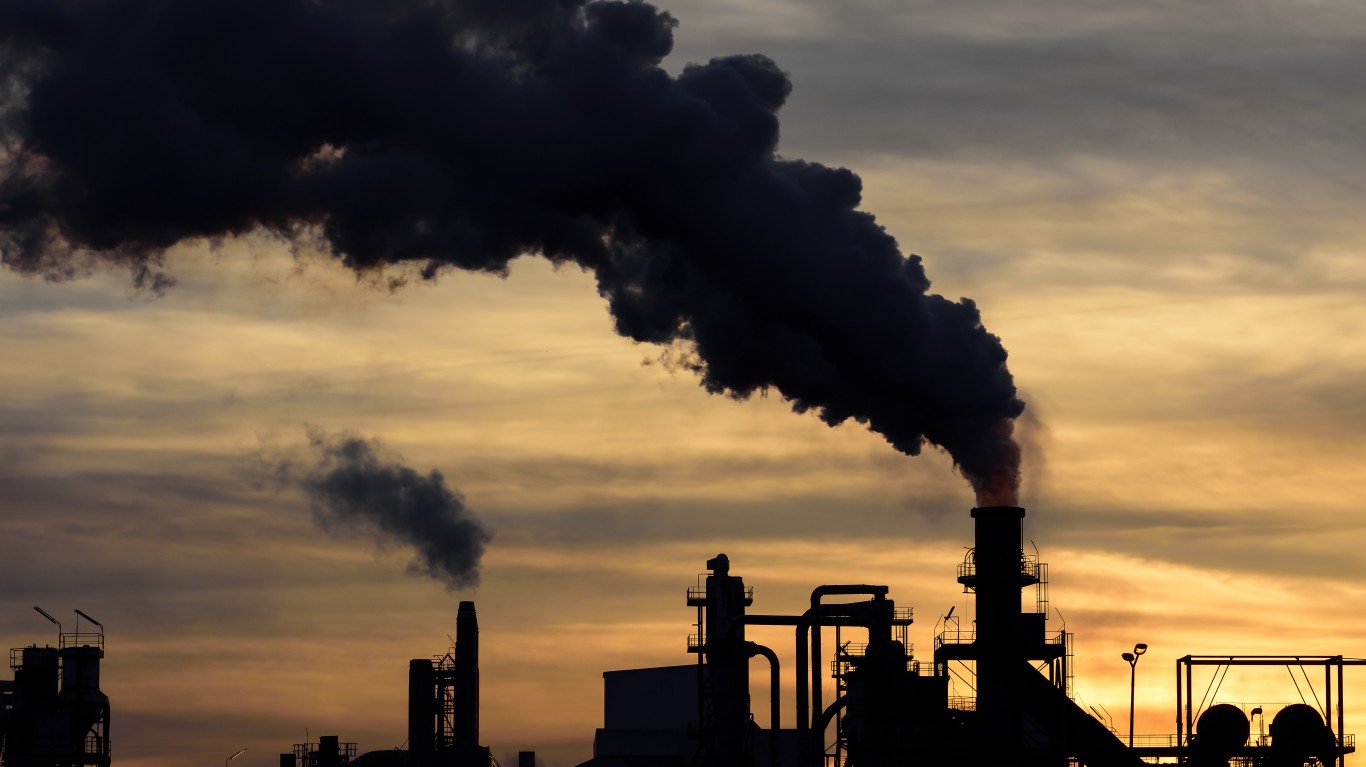
Global warming
Global warming is one of the biggest threats to humankind. A United Nations report last year warned that the planet only had about 12 years remaining to make changes to contain global warming.
Scientists have warned of any number of disastrous scenarios if we do not act quickly, including more intense storms, rising sea levels, prolonged droughts, famine, and disease.
[in-text-ad]
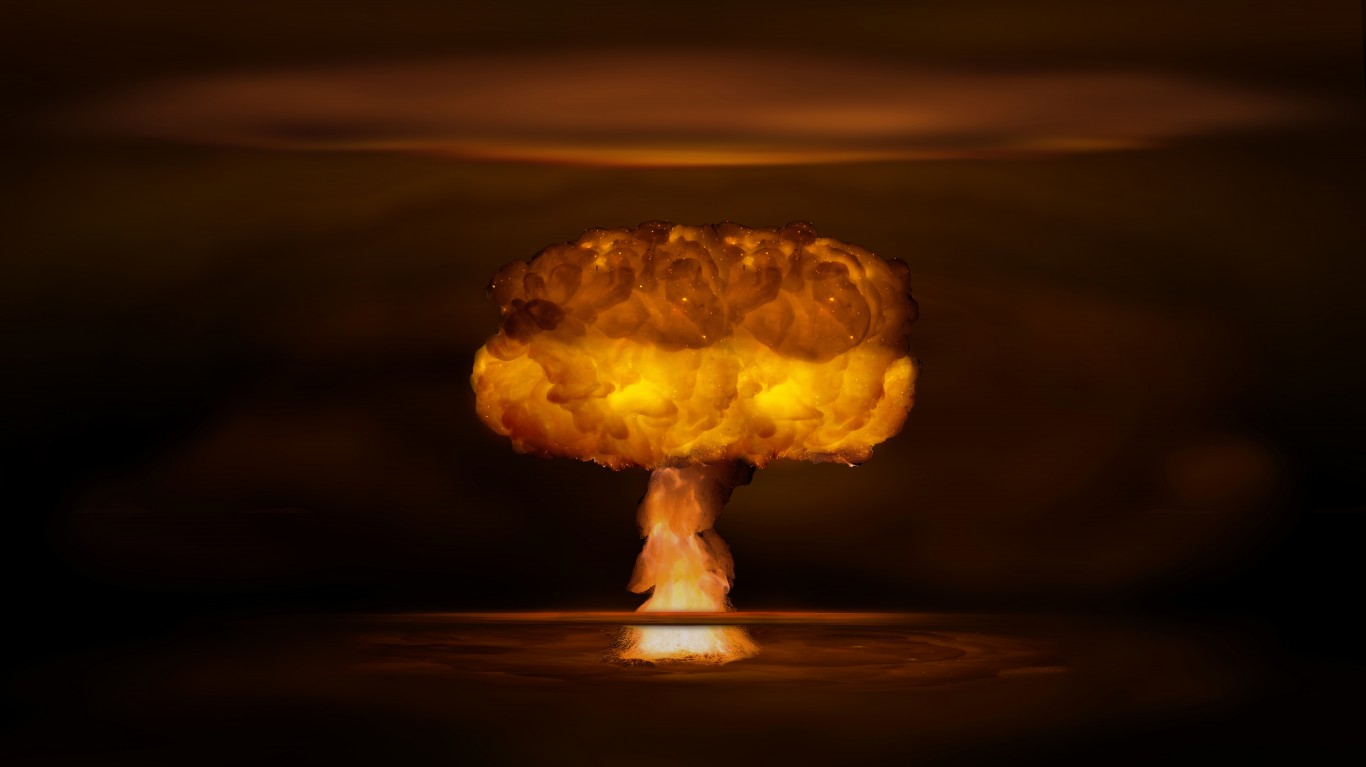
Global war
Global war can include conventional confrontations, biological and chemical warfare, and, of course, nuclear conflict. The fear is that a conventional war could escalate to any or all of the latter outcomes. Warring nations used chemical weapons such as poison gas in World War I, and more recently, Iraq and Syria used chemical weapons against their foes and their own people. Both the United States and the Soviet Union experimented with germ warfare during the Cold War.
We have come close to nuclear conflict a few times since the dawn of the atomic age, including the Cuban Missile Crisis. Even though the Cold War ended a generation ago, Russia, China, and the United States still have significant stockpiles of nuclear weapons. Other nuclear club members include North Korea, India, and Pakistan.

Black holes
Black holes are areas in space where the gravitational pull is so strong that light cannot escape them and they pull other objects into their grasp. The strength of the gravitational pull results from the amount of matter compacted into a small space. Black holes occur when a star is dying. Researchers believe there are about 10 million black holes in the Milky Way alone.
Black holes give little warning as to their direction. A black hole would not even have to come into Earth’s orbit to cause disaster. Merely passing through the solar system could disrupt orbits of other planets as well as ours. That would cause disastrous climate changes.
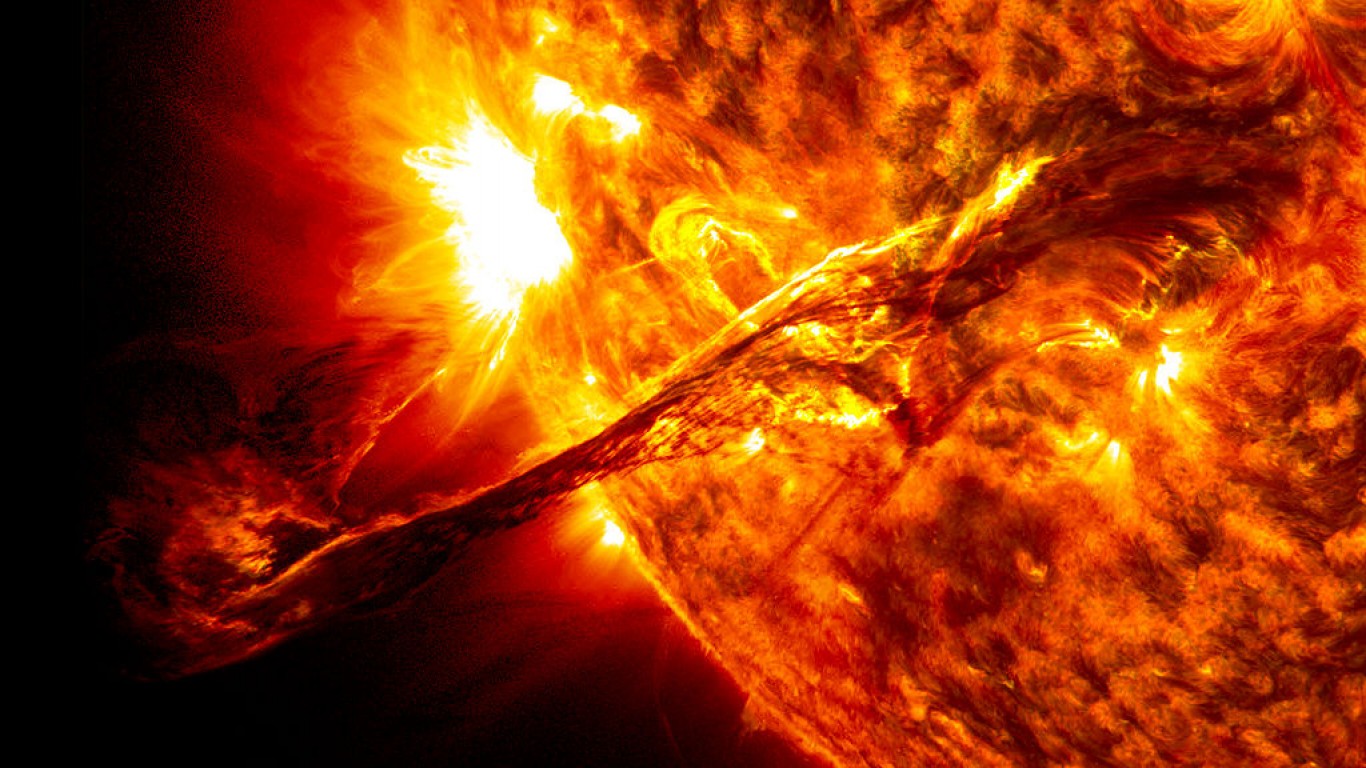
Solar flares
Solar flares are gigantic magnetic surges from the sun that hit the Earth with subatomic particles. We are shielded from the effects of ordinary flares by our atmosphere and Earth’s magnetic field. However, so-called superflares, millions of times more powerful than ordinary ones could bake the Earth and start to eradicate the ozone layer. Fortunately for us, there is no evidence to show that our sun has demonstrated that kind of behavior. Even so, scientists do not know why superflares occur.
In 1859, the worst recorded solar storm knocked out telegraph lines — the internet of its day — which burst into flames. While solar flares in recent decades have caused power failures in parts of the world, the biggest solar flare of all time was recorded in 2003, but at an angle where Earth manage to avoid its full brunt.
[in-text-ad-2]

Super volcanoes
Scientists believe we are overdue for a supervolcanic explosion, an eruption bigger than Krakatoa, Mount St. Helens, or Vesuvius. Way bigger. Such an event, scientists theorize, could throw massive amounts of debris into the atmosphere and cause the Earth’s temperature to drop.
Humans may only get a warning of a few weeks or months ahead of a titanic volcanic eruption. It might originate in Yellowstone National Park. A massive eruption last occurred there more than 600,000 years ago.
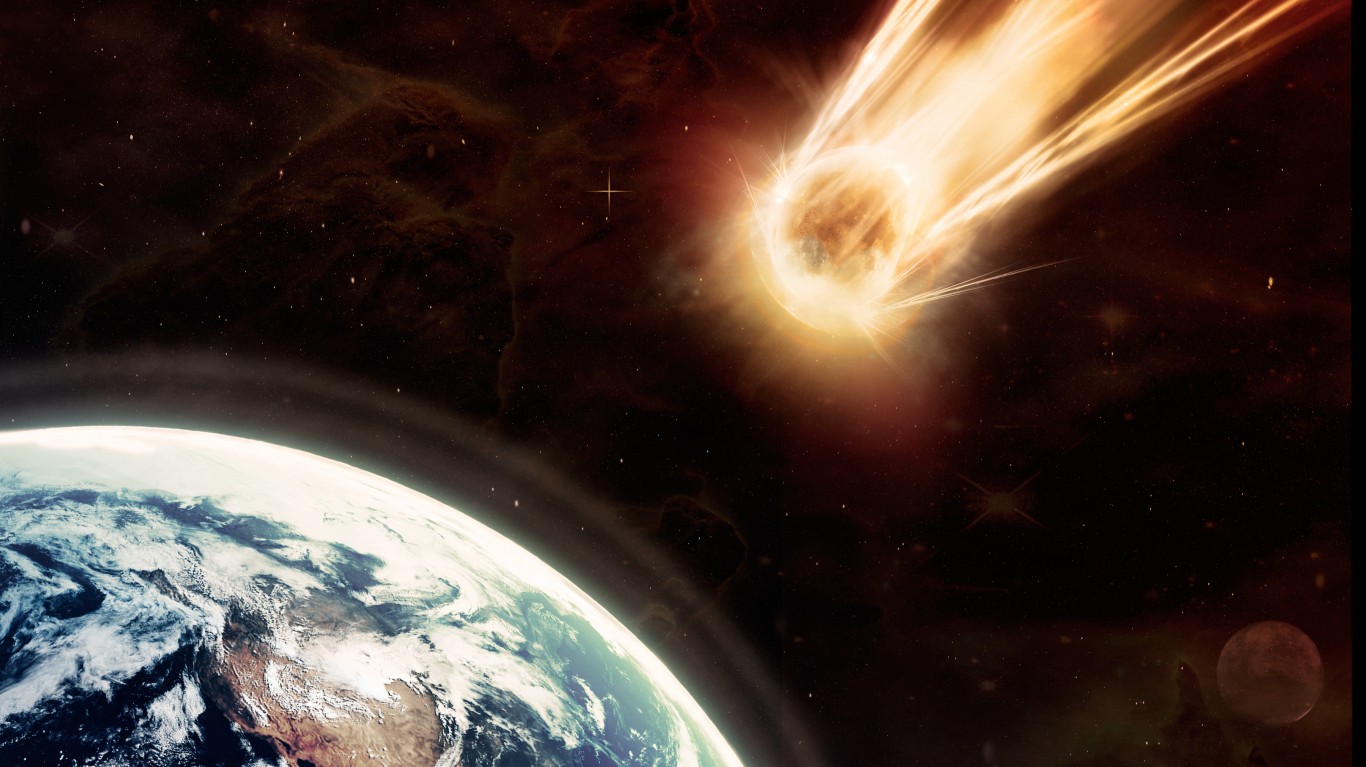
Asteroid impact
NASA published some good news in 2011. In its most detailed mapping survey of asteroids, the agency determined that there are fewer planet-destroying asteroids near Earth than previously thought. NASA scientists now estimate there are about 19,500 asteroids â between 330 feet and 3,300 feet wide â near Earth, compared with the previous 35,000 estimate, according to NASA. Timothy Spahr, director of the Minor Planet Center in Cambridge, Massachusetts, an asteroid- and comet-tracking organization, told Popular Mechanics magazine that a civilization-killing asteroid would have to be about a mile wide.
About 65 million years ago, an asteroid estimated at 6 miles wide struck the Yucatán Peninsula. The impact led to the extinction of the dinosaurs.
[in-text-ad]

Gamma ray bursts
Gamma rays are the most dangerous form of radiation. Gamma ray bursts likely result from the merging of two dying stars and can travel through almost anything, including walls. The event generates powerful beams of energy, firing charged particles into space in a spectacular surge of light. That is eye candy for astronomers, but deadly for anything within 3,000 light years of the event. If Earth were to be in the path of a gamma ray burst, radiation would destroy our atmosphere and produce nitrogen oxides, a gas that would eradicate the ozone layer. Without the ozone layer, the sun’s ultraviolet rays would reach the surface unimpeded, wiping out the plankton in the ocean that produce oxygen to the atmosphere and disrupting the food chain, while causing other serious effects such as skin cancer.
Fortunately for us, gamma ray bursts have been distant, and scientists believe they are rare. Fox said the average galaxy has gamma ray burst occurrence once every 10 million years.

Pandemics
There have been no shortage of devastating pandemics throughout human history — the Plague of Justinian practically destroyed the Byzantine Empire in the sixth century. The bubonic plague in the 14th century killed one-third of Europe’s population by some estimates. The Spanish flu claimed millions of lives 100 years ago. The recent outbreak of Ebola in the Democratic Republic of Congo reminds us that the modern world is not free from deadly viruses.
Our world is more connected than ever, increasing the opportunity for disease to spread quickly around the planet. Diseases that we thought we had conquered such as cholera have developed resistance to antibiotics.

Reversal of Earth’s magnetic field
Every 100,000 to 1 million years, the North and South Poles swap magnetic polarity. The last time this happened was 780,000 years ago. This could be worrisome because the magnetic field thwarts particle storms and rays from the sun as well as from deeper space from hitting the Earth. Without a magnetic shield, even temporarily, our planet would be bombarded with these particles.
That reversal could cause the geomagnetic field to collapse, at least briefly, disrupting power grids, gas pipelines, and communications satellites.
[in-text-ad-2]

Biotech disaster
Genetic engineering has made crops more plentiful and nutritious, and their development has helped to feed developing countries. Gene therapy provides the hope of re-engineering defects in our DNA. But there are risks to genetic engineering. Scientists are concerned that genetic engineering can create errors that lead to disastrous consequences, such as disrupting the food chain.
British cosmologist Martin Rees predicted in 2002 that “by 2020 a biological catastrophe (either bioterror or bioerror) will lead to one million casualties in a single event⦠Biotechnology is developing very fast, and there are greater risks of error or terror.”
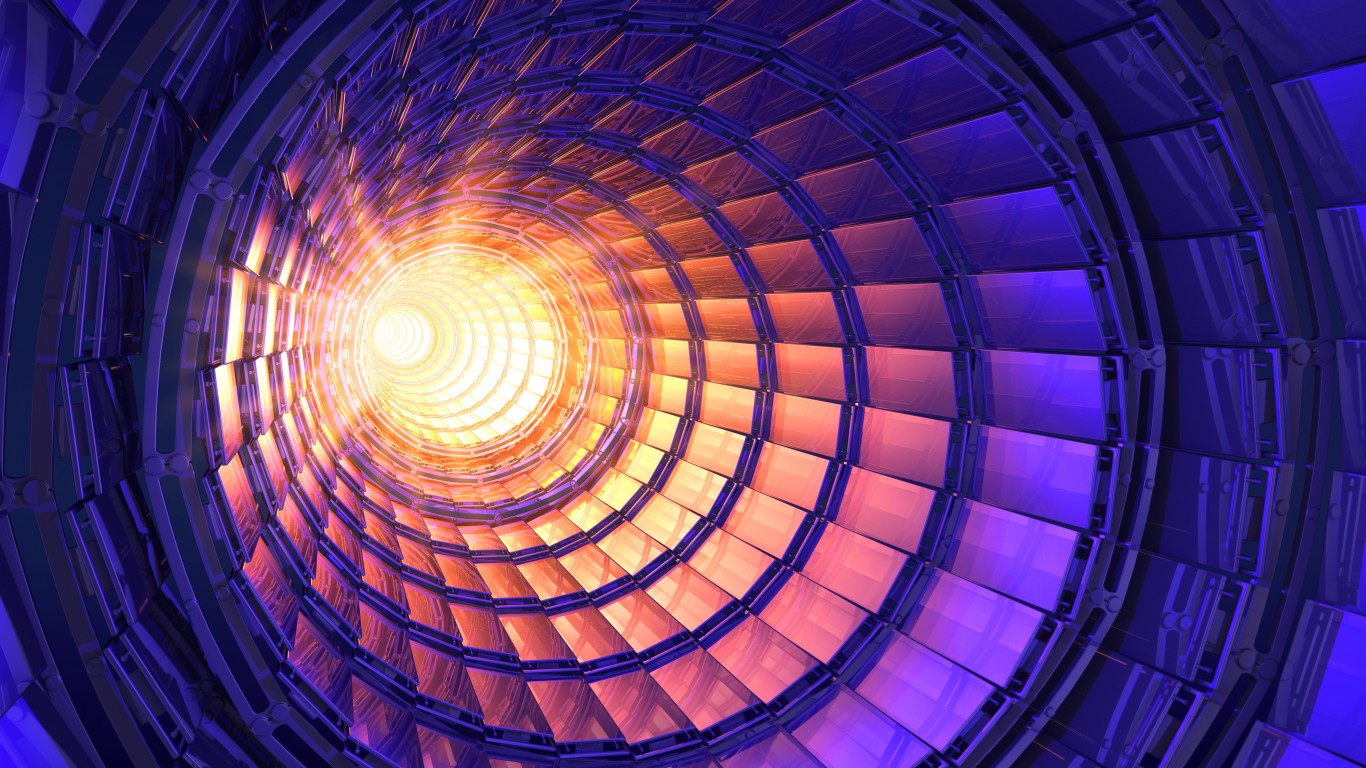
Particle accelerator accident
Some physicists have fear that an accident involving particle accelerators might cause a disaster. The scenarios the present include the creation of a subatomic black hole that could slowly erode the Earth or the creation of altered bits of matter called called strangelet that wipes out ordinary matter.
The director of the Relativistic Heavy Ion Collider in Long Island, New York, convened a panel that sought to reassure those concerned that both doomsday scenarios were virtually impossible.
[in-text-ad]

Artificial intelligence
A robot takeover of civilization has been a staple of science fiction since the genre was created. Artificial intelligence experts Hans Moravec at Carnegie Mellon University sees the possibility of artificial intelligence surpassing that of humans, then merging with humankind to form a new “postbiological” life form. Other scientists like Marvin Minsky, called “the father of artificial intelligence,” predicted that people could effectively download their brains into computer-powered entities and access infinite files of information and experiences. Of course, this raises the question of whether this is the end of humanity as we know it.
Others have other concerns about the rise of artificial intelligence. Astrophysicist Stephen Hawking, entrepreneur Elon Musk, and Microsoft co-founder Bill Gates have all raised warnings about AI.

Nanotechnology disaster
Nanotechnology, or the study of tiny, sub-atomic-sized tech, holds much scientific promise for medical, military, or home use. But some experts, such as engineer K. Eric Drexler, see nanotechnology as something that could be misused by terrorists or even wipe out the biosphere after an accident.
In case you are up at night worrying about this scenario, scientist Robert A. Freitas Jr. examined this doomsday possibility. He concluded that humans would recognize the oncoming “gray goo” event and stop it in time.
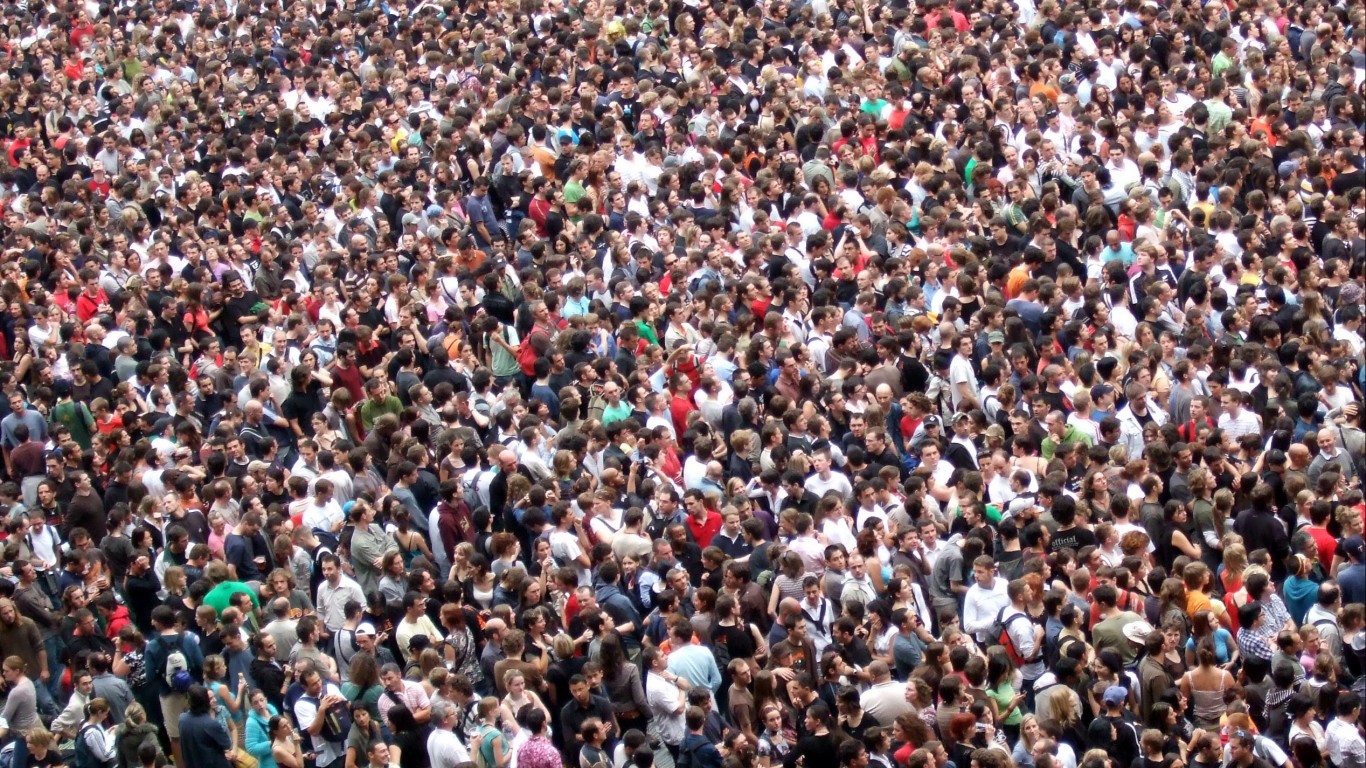
Overpopulation
Stanford University biology professor Paul Ehrlich warned about overpopulation in his 1968 book “The Population Bomb.” Though his prediction that hundreds of millions of people would starve to death in the 1970s did not come true, he is still convinced overpopulation remains a danger because billions of people are malnourished.
Famed astrophysicist Stephen Hawking also warned about overpopulation that could lead to the end of the world. At a speech in June 2017 in Norway, Hawking said our only hope of survival is to colonize other worlds.
[in-text-ad-2]

Environmental pollution
Anyone who has spent any time in Beijing knows the dangers of a modern city engulfed by pollution. This has been an issue since the beginning of the Industrial Revolution, when pollution overwhelmed London. Residents of Donora, Pennsylvania, and Bhopal, India, have also been victims of industrial pollutants.
Even though humankind is aware of the dangers caused by fossil fuel emissions from cars and industrial activity, we continue to poison ourselves and the world with these toxins, as the developing world industrializes.

Rogue planet hits Earth
A collision of a smaller planet with a larger one 4.5 billion years ago in our solar system led to the creation of Earth and its moon. A similar event would spew debris all about the solar system and doom Earth. A new planet created from such an episode would re-form and cool.
[in-text-ad]

Sun could start to die
The sun, like any other star, has an expiration date. At this point, the sun is about halfway through its life of converting hydrogen into helium through fusion, a steady process that emits heat and allows life to exist on Earth. Once the sun runs low on hydrogen, it will start fusing helium. The ensuing reaction will push the layers of the sun outward, and possibly pull the Earth toward it. That would mean the end of our planet as we know it. Another result of the demise of the sun would be that Earth could be ejected out of its orbit and exist as a frozen rock in deeper space.
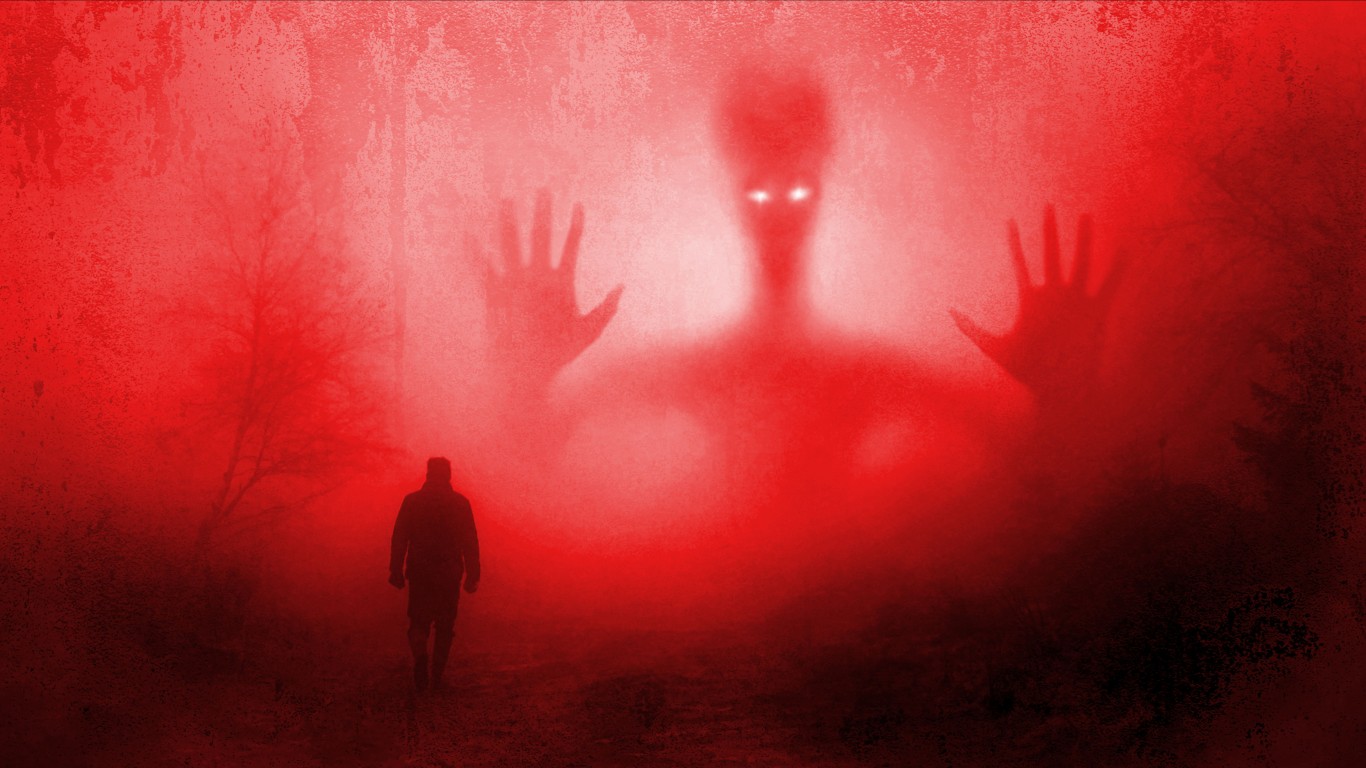
Alien invasion
The mission of the non-profit scientific organization SETI Institute (search for extraterrestrial intelligence) is to “explore, understand and explain the origin and nature of life in the universe and the evolution of intelligence.” So far, we have not received any signal from out there.
But what if we did make contact? Would the encounter be friendly or hostile? Books, movies, and television programs have explored those possibilities. Even a benign encounter might be deadly to humankind. When Europeans came to the Western Hemisphere starting in the 15th century, they inadvertently brought diseases that decimated the native population. Such a fate could befall humanity if aliens arrived here.
[in-text-ad-2]
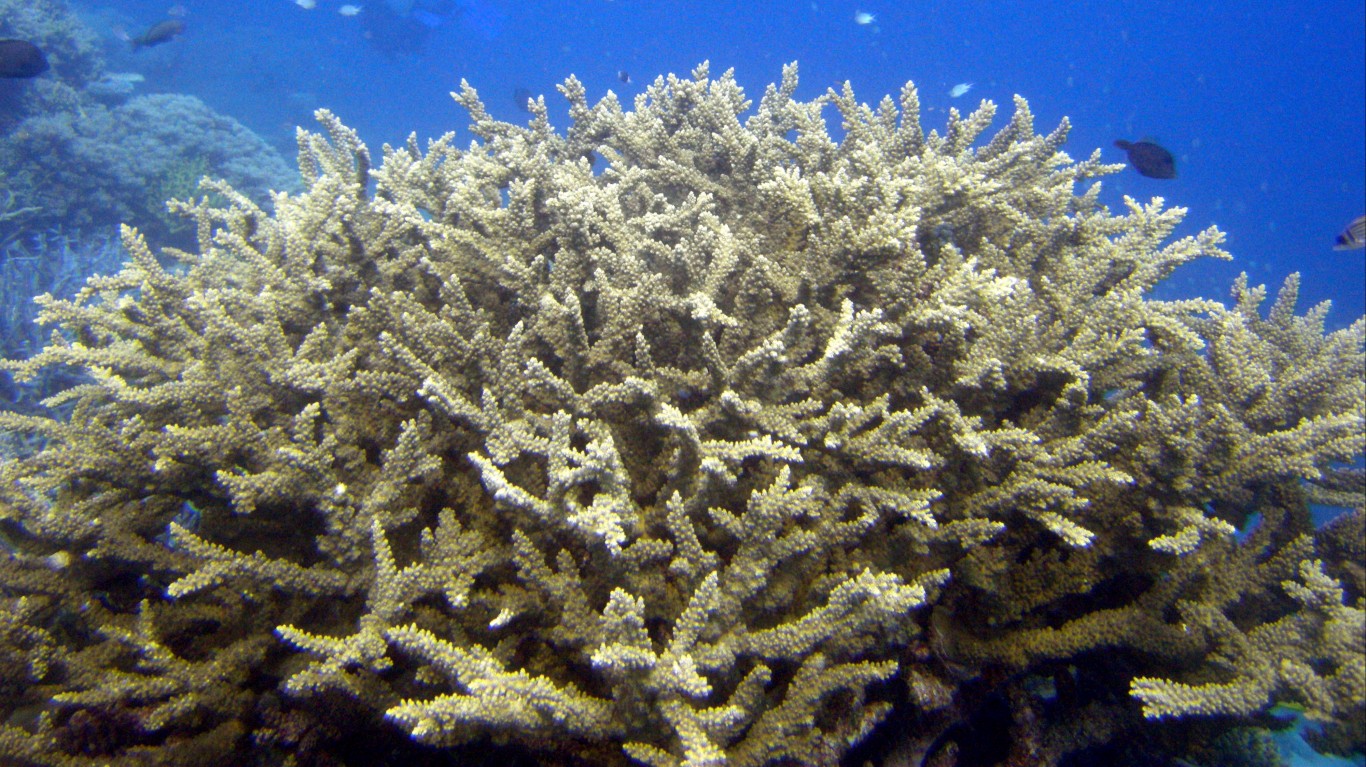
Oceans become more acidic
Higher levels of carbon dioxide led to an extinction event millions of years ago — and carbon dioxide levels are rising again. Scientists who have studied the effects of elevated CO2 levels believe higher carbon dioxide levels will damage coral reefs and reef destruction could remove the habitat of about 25% of marine life.
Reef eradication could also make many coastal cities vulnerable to storm and wave damage.
Want to Retire Early? Start Here (Sponsor)
Want retirement to come a few years earlier than you’d planned? Or are you ready to retire now, but want an extra set of eyes on your finances?
Now you can speak with up to 3 financial experts in your area for FREE. By simply clicking here you can begin to match with financial professionals who can help you build your plan to retire early. And the best part? The first conversation with them is free.
Click here to match with up to 3 financial pros who would be excited to help you make financial decisions.
Have questions about retirement or personal finance? Email us at [email protected]!
By emailing your questions to 24/7 Wall St., you agree to have them published anonymously on a673b.bigscoots-temp.com.
By submitting your story, you understand and agree that we may use your story, or versions of it, in all media and platforms, including via third parties.
Thank you for reading! Have some feedback for us?
Contact the 24/7 Wall St. editorial team.
 24/7 Wall St.
24/7 Wall St.


